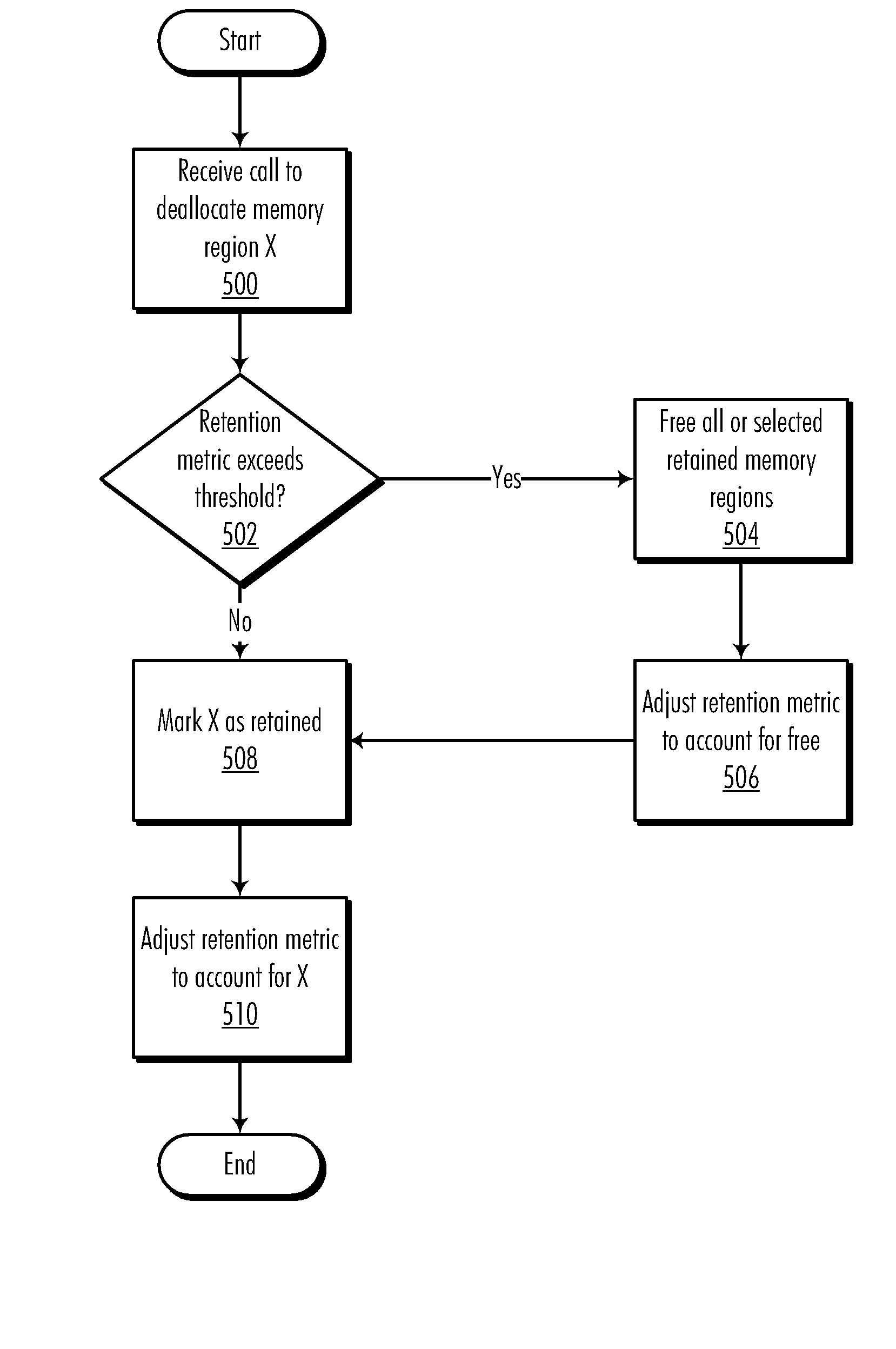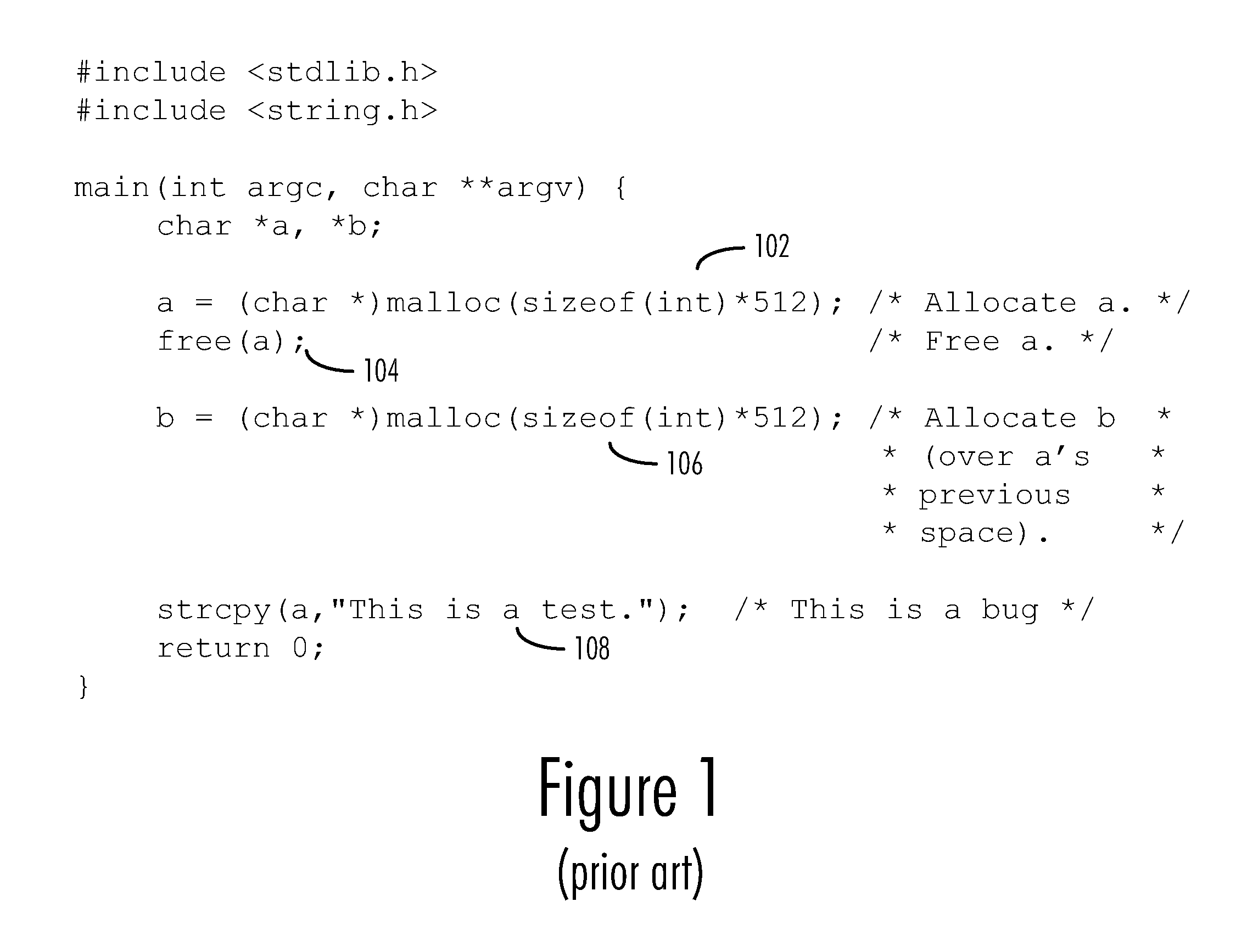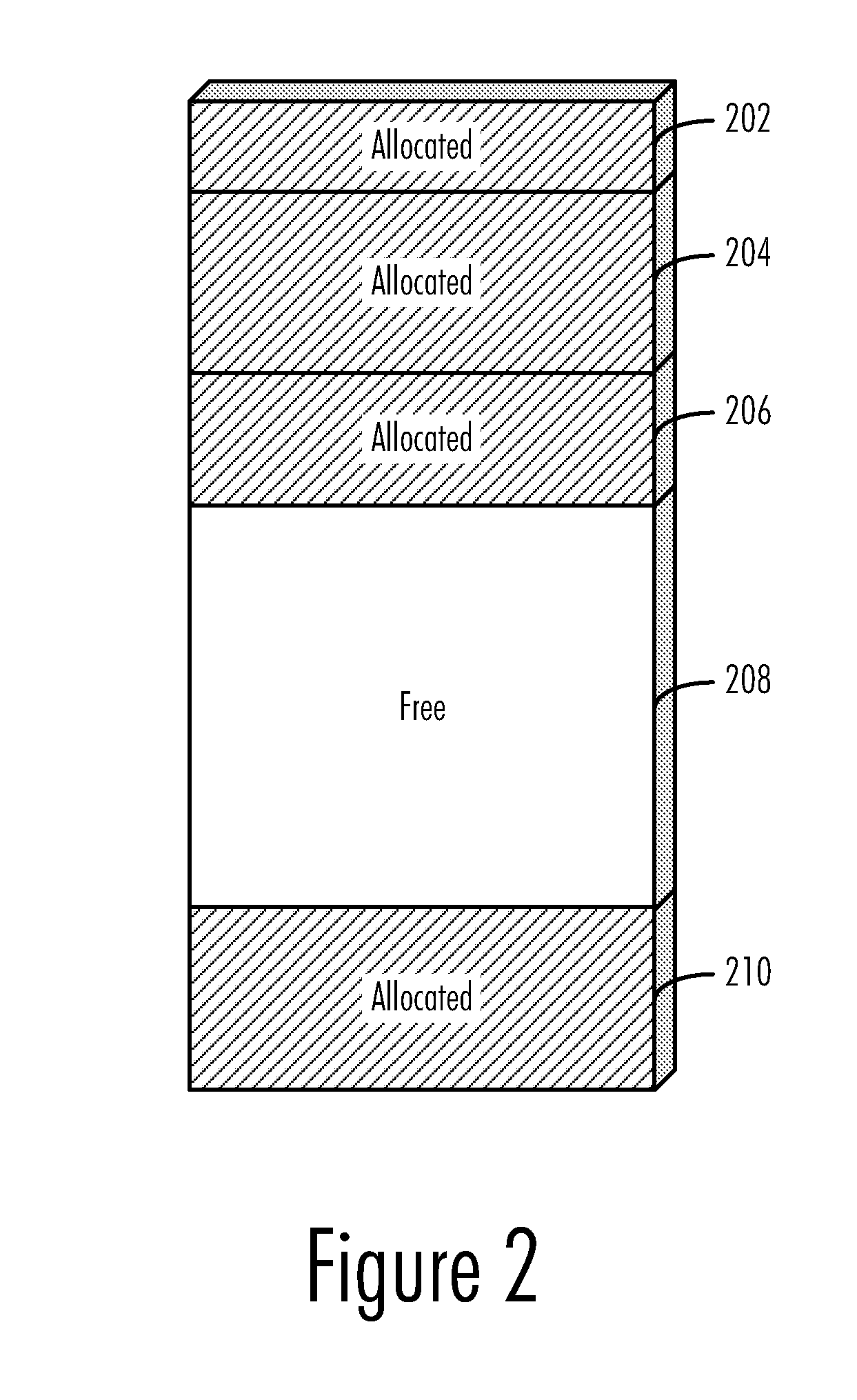Detecting Illegal Reuse of Memory with Low Resource Impact
a memory and resource impact technology, applied in the field of memory management, can solve the problems of the most common and devastating types of computer programming errors, the most difficult to detect dangling pointers, so as to avoid excessive resource usage and heap fragmentation, and the effect of detecting more easily
- Summary
- Abstract
- Description
- Claims
- Application Information
AI Technical Summary
Benefits of technology
Problems solved by technology
Method used
Image
Examples
Embodiment Construction
[0016]The following is intended to provide a detailed description of an example of the invention and should not be taken to be limiting of the invention itself. Rather, any number of variations may fall within the scope of the invention, which is defined in the claims following the description.
[0017]The present invention is directed to the allocation, deallocation, and management of regions of memory in the memory space of a runtime environment. In a preferred embodiment, this memory management is performed by an operating system charged with the task of allocating memory for all of the application processes running in the operating system. Other runtime environments may also employ the teachings of the present invention, however. For example, some application processes, such as certain interpreters and virtual machines, may perform their own memory management in lieu of or in addition to that performed by the operating system and may therefore also be made to contain an embodiment ...
PUM
 Login to View More
Login to View More Abstract
Description
Claims
Application Information
 Login to View More
Login to View More - R&D
- Intellectual Property
- Life Sciences
- Materials
- Tech Scout
- Unparalleled Data Quality
- Higher Quality Content
- 60% Fewer Hallucinations
Browse by: Latest US Patents, China's latest patents, Technical Efficacy Thesaurus, Application Domain, Technology Topic, Popular Technical Reports.
© 2025 PatSnap. All rights reserved.Legal|Privacy policy|Modern Slavery Act Transparency Statement|Sitemap|About US| Contact US: help@patsnap.com



